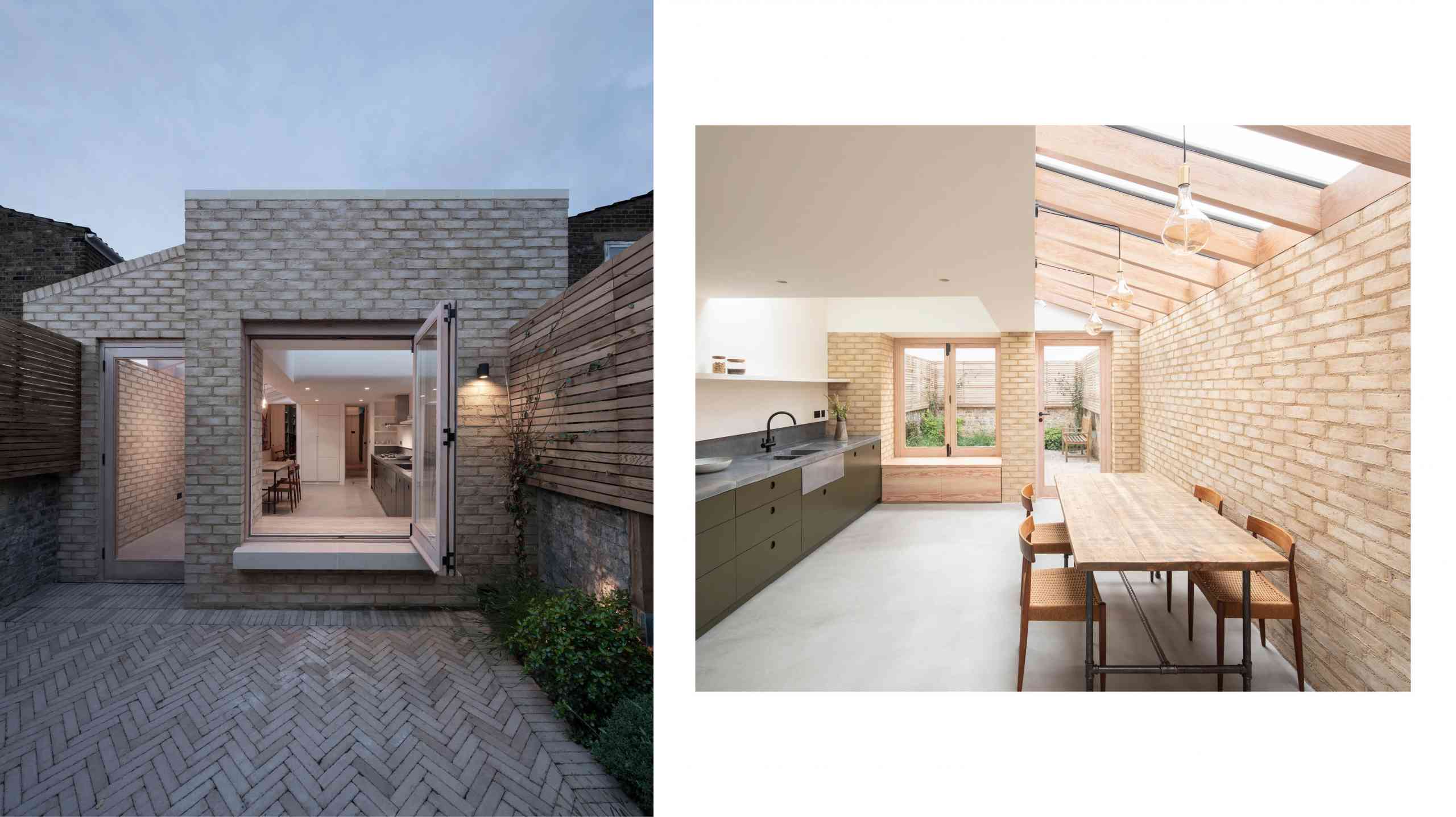Good news – you usually don’t need planning permission for a modest rear extension, thanks to permitted development (PD) rights. There are important rules and exceptions though, so read on to see if your home and proposal qualify.
Extension pictured above by Oliver, architect from Wandsworth, London. Click here to see more and shortlist their studio for your home project.
The notes below are a brief summary and not design advice. Always check the official guidance in full (read it here).
Extension size
You can often build a single-storey rear extension up to six metres from the original rear wall (or eight metres if detached) under PD. If the house has already been extended since 1948, that counts toward the allowance. For extensions beyond three metres (terraced/semi) or four metres (detached), you must follow the Neighbour Consultation Scheme.
Property type
Permitted development rights apply to houses only – not flats or maisonettes. Homes created via change of use/conversion may have limited or no PD rights.
Conservation areas, listed buildings & Article 4
In protected areas (e.g. Conservation Areas, National Parks, AONBs, the Broads, World Heritage Sites), PD rights may be restricted or removed. Check whether an Article 4 Direction applies. Common restrictions include:
- No side extensions
- No cladding changes
- No two-storey extensions under PD
Key PD rules for single-storey rear extensions
- External materials should be similar to the existing house
- No verandas, balconies or raised platforms
- Extension must not be taller than the existing house
- Total additions (including outbuildings) must not cover more than 50% of the original garden
- Maximum height 4m; if within 2m of a boundary, eaves height limited to 3m
Key PD rules for double-storey rear extensions
- Eaves and ridge must not exceed the existing house; if within 2m of a boundary, eaves max 3m
- No two-storey side or front extensions under PD
- Upper-floor side windows must be obscure-glazed and non-opening below 1.7m internal height
Front extensions
Front extensions are not allowed under PD, but you can apply for planning permission.
Pre-purchase and planning due diligence
- Still house-hunting with extension plans? Use The Potential House for an impartial pre-purchase appraisal to check feasibility, local precedent and likely constraints before you commit.
- Already own the property? Post your project on Design for Me to meet the right residential architect for design, planning applications and approvals.
Frequently asked questions
Do I need a Lawful Development Certificate (LDC) if my extension is PD?
It’s optional but recommended. An LDC is written confirmation from your council that your proposal meets PD rules. It helps with conveyancing, resale and mortgage queries later on.
Does permitted development apply to flats or maisonettes?
No. PD rights for householder extensions apply to houses only. Flats and maisonettes will require a planning application.
What if my house is in a Conservation Area or has an Article 4 Direction?
PD rights may be limited or removed. You may still be able to extend, but you’ll likely need to apply for planning permission and meet stricter design requirements.
We already have an old rear extension—can we extend further under PD?
Possibly, but previous additions since 1948 can reduce your remaining PD allowance. An architect can review what counts toward your total and advise on options.
Do I still need Building Regulations approval?
Yes. PD only relates to planning permission. Most extensions require Building Regulations approval covering structure, fire safety, insulation, drainage and more.
Can I do a side return extension under PD?
Single-storey side extensions can be PD in some cases, but limits apply (e.g. height, width and overall coverage). In certain protected areas, side extensions may be excluded from PD.
Can I build a two-storey rear extension under PD?
Only in limited circumstances and never to the front or side under PD. There are strict rules on height, distance to boundaries and window design.
How does the Neighbour Consultation Scheme work for larger rear extensions?
For deeper single-storey rear extensions, a prior approval process applies. The council notifies neighbours and decides if prior approval is required. Timelines and details vary—check with your local authority.
We’re buying a house to extend—what should we check first?
Confirm whether PD limits, local precedents, Article 4, heritage constraints and site specifics support your idea. An impartial pre-purchase appraisal with The Potential House can review feasibility before you commit.
Buying a property you hope to extend? A RICS survey checks condition; it won’t confirm whether your extension idea is feasible or likely to get planning/PD sign-off. The Potential House offers an impartial, architect-led pre-purchase appraisal that assesses design potential, planning risk and budget fit before you commit. (Independent: no follow-on design work.)


